Irish Cider's Home Rules
Aoife Carrigy talks to Seamus O’Hara of Drinks Ireland|Cider about why Irish cider is at a seriously exciting stage in it millennia-long evolution.
A couple of autumns ago, I had the joy of visiting Washington State in all its glorious fall colours and touring several cideries and orchards within a short ferry-and-drive from Seattle. Researching a feature for CARA Magazine on the local wine and cider scene (available to read here) I discovered that each was as dynamic as the other.
FLAVOUR EXPERIENCES
One Seattle cider bar had several dozen diverse choices on tap, scores more in a wall of fridges and the popular option of building your own flight, so that you could sample oak-aged or berry flavoured or hopped, tannic or spiced APPLE ciders side by side with classic styles ranging from bone-dry to fully sweet with all sorts of tangy or bittersweet accents. It reminded me of visiting an old-school sweet shop as a young child, with its mind-blowing rows of possible flavour experiences.
UNLIKELY FRIENDS
Cider and wine might seem unlikely friends, but both are fermented beverages based on seasonal fruit - unlike beer, which is brewed from grain and preserved with flavoursome hops. In Ireland we don’t have the weather to grow grapes for wine on a viable commercial scale (though some intrepid souls are trying) but apples we can do very well, making cider a natural home-grown alternative to wine. Many of its diverse styles pair very well with food, combining the complex fermented character of wine with the palate-cleansing carbonation of beer.
.jpg) APPLE VARIETIES - LOCAL PRODUCT
APPLE VARIETIES - LOCAL PRODUCT
All sorts of apple varieties thrive in all sorts of orchards dotted along the eastern half of the island, from Armagh through Louth, Meath and Dublin down to Tipperary, Kilkenny and Waterford, representing many different microclimates. That diversity is what makes the still-nascent Irish cider sector so ripe for discovery and innovation.
“I got interested in cider because it’s so interesting as a local product,” says Seamus O’Hara, whose Carlow Brewing Company was a leading light of the first wave of Irish craft brewing in the 1990s. Today Seamus also heads up Falling Apples cider and Craigies Cider, which was originally the passion project of Simon Tyrrell, an Irish wine importer who also makes wine in France, and he chairs Drinks Ireland|Cider, an offshoot of IBEC that represents both large and small cider makers around the country. “There are so many variables involved,” he enthuses, “depending on the varieties used and the particular orchards and their specific terroir – just like with wine.”
LONG HISTORY
Cider has a long history on this island, going back at least two millenia, as cider maker Mark Jenkins of The Cider Mill explains very well on the website of Cider Ireland, an association of like-minded small-scale cider makers, many of whom grow their own apples. There are over 70 distinctly Irish varieties of apple still in existence. Within the four main types of cider apples – Sharps, Bittersharps, Bittersweets and Sweets – lie many shades of flavour and character, all of which can be harnessed into diverse expressions of this ancient native drink.
QUIET REVOLUTION
Somewhere along the way, however, expressions of Irish cider became dominated by a style so sticky sweet that even fans prefer it poured over a pint glass of ice, for palatability (as low temperatures suppress flavour). In recent years, we have seen a quiet revolution with more and more independent craft-focused cider makers exploring the diversity that those apples offer, without resorting to artificial colourants, sweeteners or concentrates. “These ciders are as diverse as the producers who make them,” writes Mark Jenkins, “full of character and distinctive local flavours unique to each maker.”

DIVERSE RANGE
There’s no better time than this summer to get to know this increasingly diverse range of Irish craft ciders – many of which have more in common with their dry French or experimental north-American counterparts than with the sticky-sweet-over-ice style that dominated our market for too many years. As highlighted in a recent Cider Market Report from Drinks Ireland|Cider, while cider sales in Ireland were slightly down in 2019 – reflecting an overall reduction in alcohol consumption – our diverse range of cider producers have seen exports to the UK rise by a third, giving them a much-needed boost. Unfortunately, at home in Ireland, we pay the third highest rate of excise on cider in the European Union – something that acts as both a deterrent to drinkers exploring the good stuff and a barrier to small producers building a viable business. Drinks Ireland|Cider is calling for cider to be included within the EU Excise Structures Exemption, which currently makes excise relief reductions of up to 50% available to small craft breweries. As Seamus explains, “that reduction in excise was a game changer for craft breweries,” making them commercially viable without the economies of scale that benefits mass product
CRAFT DRINKS TOURISM
Drinks Ireland|Cider have also called for direct online sales to be allowed for cider makers, many of whom do not have strong representation in off-licences or supermarkets. While a 2018 Bill lead by Labour’s Alan Kelly allows for breweries, distilleries and similar premises to apply for a licence to sell their produce to visitors at their premises – making craft drinks tourism a more viable revenue stream for them – currently producers who have not applied for that specific licence can only sell at minimum quantities of three cases.
For Seamus O’Hara, however, one of the biggest barriers to growth of the Irish cider sector has been perception amongst consumers. “People have a very limited idea of cider and what it is and when you might drink it,” he says – despite the efforts of a growing number of restaurants that are promoting cider as a locally produced, food-friendly alternative to wine.
INTRODUCTORY SELECTION
Below is a small introductory selection to what is an increasingly diverse range of Irish craft ciders – but really there are so many more wonderful styles out there, from Long Meadow’s robust Oak-Aged Cider or Tempted’s zippy Strawberry Cider (both from Co Armagh) to Longways’ delicate Elderflower Cider (Co Tipperary), Highbank’s honeyed Medieval Cider (Co Kilkenny) and Longueville House’s robust Mór Cider (Co Cork) aged in their own apple brandy casks. My best advice to you is to look out for what is being produced or sold in your own locality, and give it a go – with or without food. You may be surprised what you’ll find.
FIVE CIDERS AND PAIRINGS TO TRY
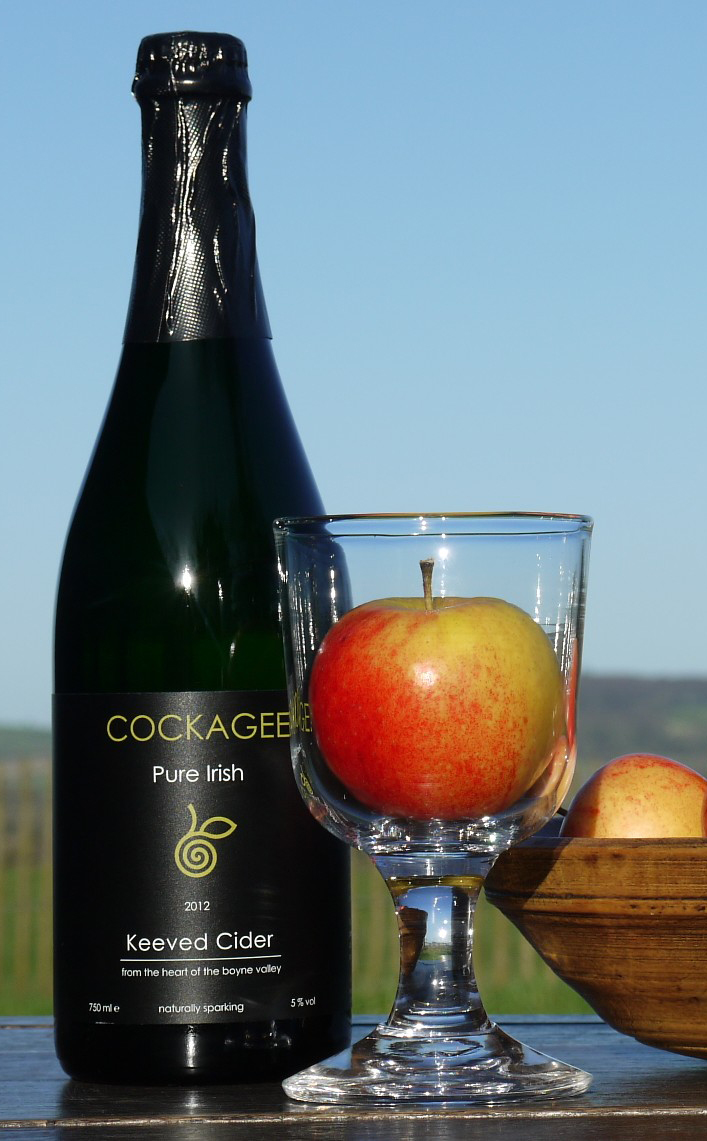 1. Cockagee, Co. Meath
1. Cockagee, Co. Meath
5%, €10.99, 750ml, drinkstore.ie and selected independents
Mark Jenkins of The Cider Mill near Slane doesn’t believe in cutting corners or hurrying life’s good things, and is Ireland’s only cider maker to stay loyal to the traditional keeving process, in which nothing is added to the pressed juice but time and technique – no filtering or pasteurisation, sweetening or force carbonating. The result is a naturally sparkling cider with bright aromas and rich, robust flavours that is both full-bodied and dry enough to pair with a broad range of foods, or to drink solo as a celebratory drop.
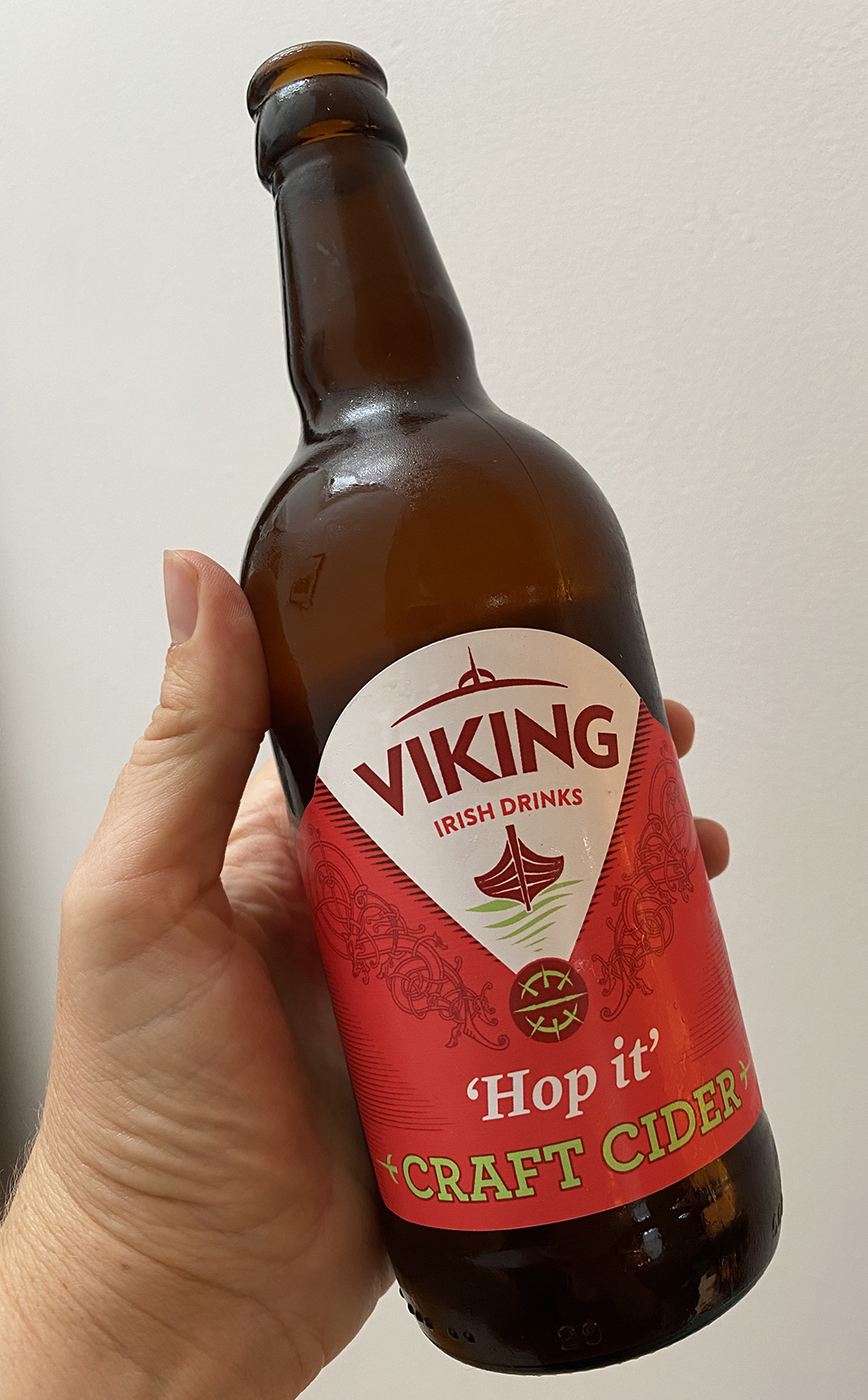 2. Viking Hop-It Cider, East Waterford
2. Viking Hop-It Cider, East Waterford
5.5%, RRP €4.49, 500ml, Ardkeen and selected independents
An adventurous soul, David Dennison is experimenting with both wines and unfiltered ciders, having planted 3.5 hectares of orchards featuring over a dozen different cider and culinary apples alongside a hectare of vines. Look out for this hopped cider, in which Citra, Cascade and Amarillo hops layer citrus and herbal character over a refreshing farmhouse style. One to pair with rustic stews or cold cut teatime platters.
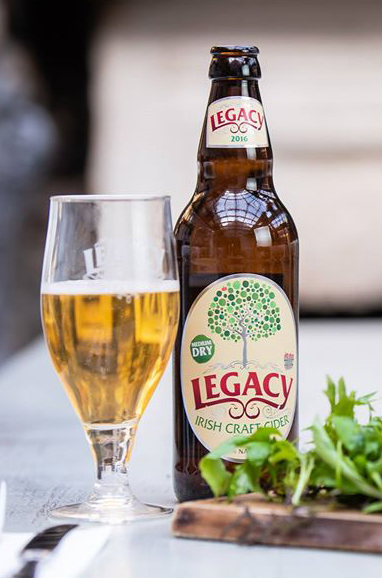 3. Legacy Dry Irish Craft Cider, Dungarvan
3. Legacy Dry Irish Craft Cider, Dungarvan
5%, €3.95, 500ml, selected Supervalu, Ardkeen and legacyirishcider.ie/shop
Liam McDonell knows his apples, having been born into generations of West Waterford apple growers (his father has a PhD on the matter). This crisp, dry and subtly tannic cider balances the floral fragrance of Elstar apples and tart Bramley tang with the juicy sweetness of Michellin apples. A great choice to cut through oily fish or cream-based pork or chicken dishes.
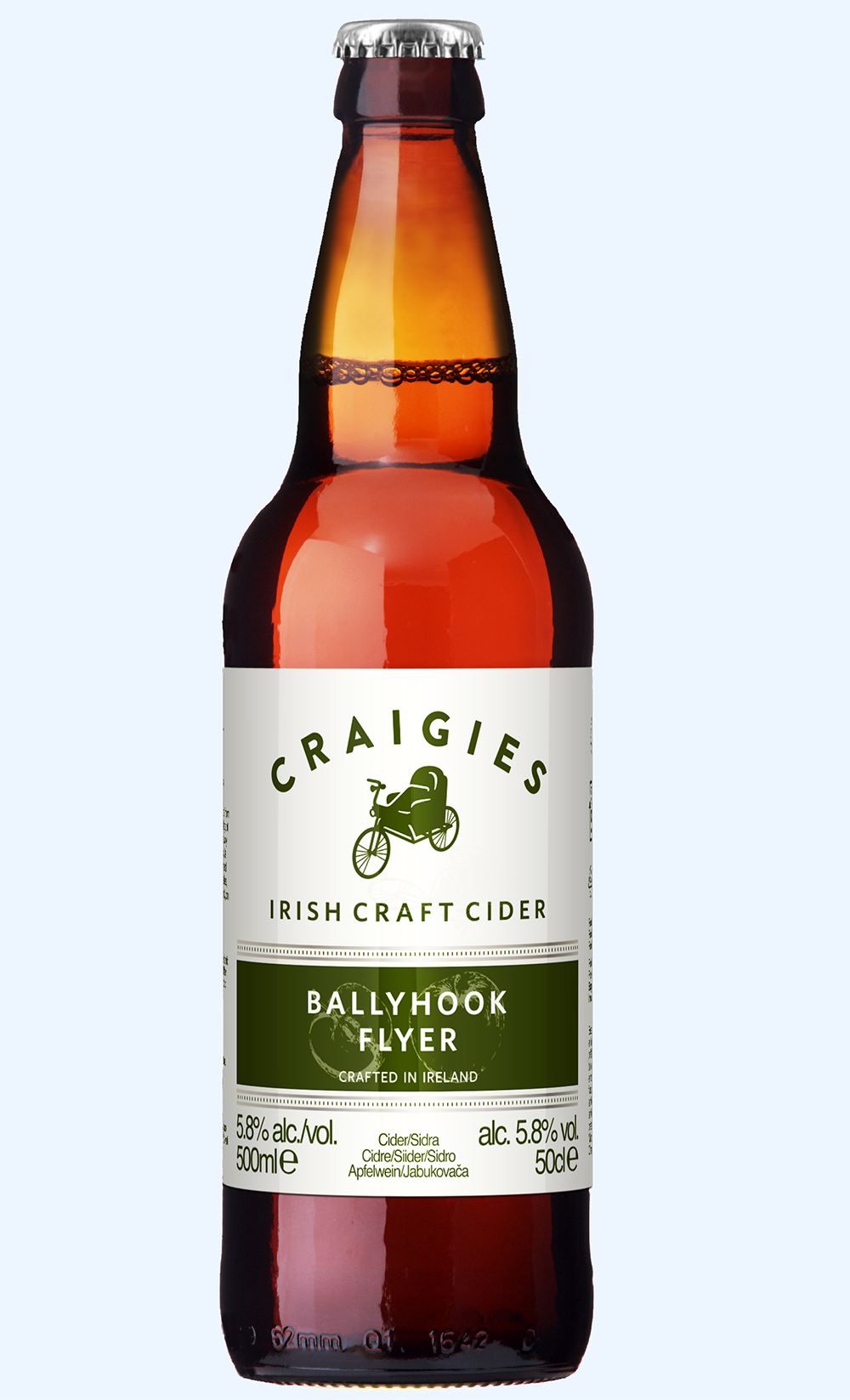 4. Craigies Ballyhook Flyer, Co. Wicklow
4. Craigies Ballyhook Flyer, Co. Wicklow
€3.95, 500ml, widely available including selected Dunnes, Spar, Eurospar, Londis, Mace and independents
Established by Angus Craigie and wine importer and producer Simon Tyrrell, Craigies is now owned by Seamus O’Hara’s Carlow Brewing Company, who also make Falling Apples Cider. This dry and elegant Breton-style cider balances fruity and savoury flavours with refreshing acidity and some tannic astringency, the result of blending of tannic Dabinett apples with sweet Katy dessert apples andf tart Bramleys from various orchards in Waterford, Tipperary and Kilkenny. Try with roast white meats, cheese boards or as a refreshing drink on its own.
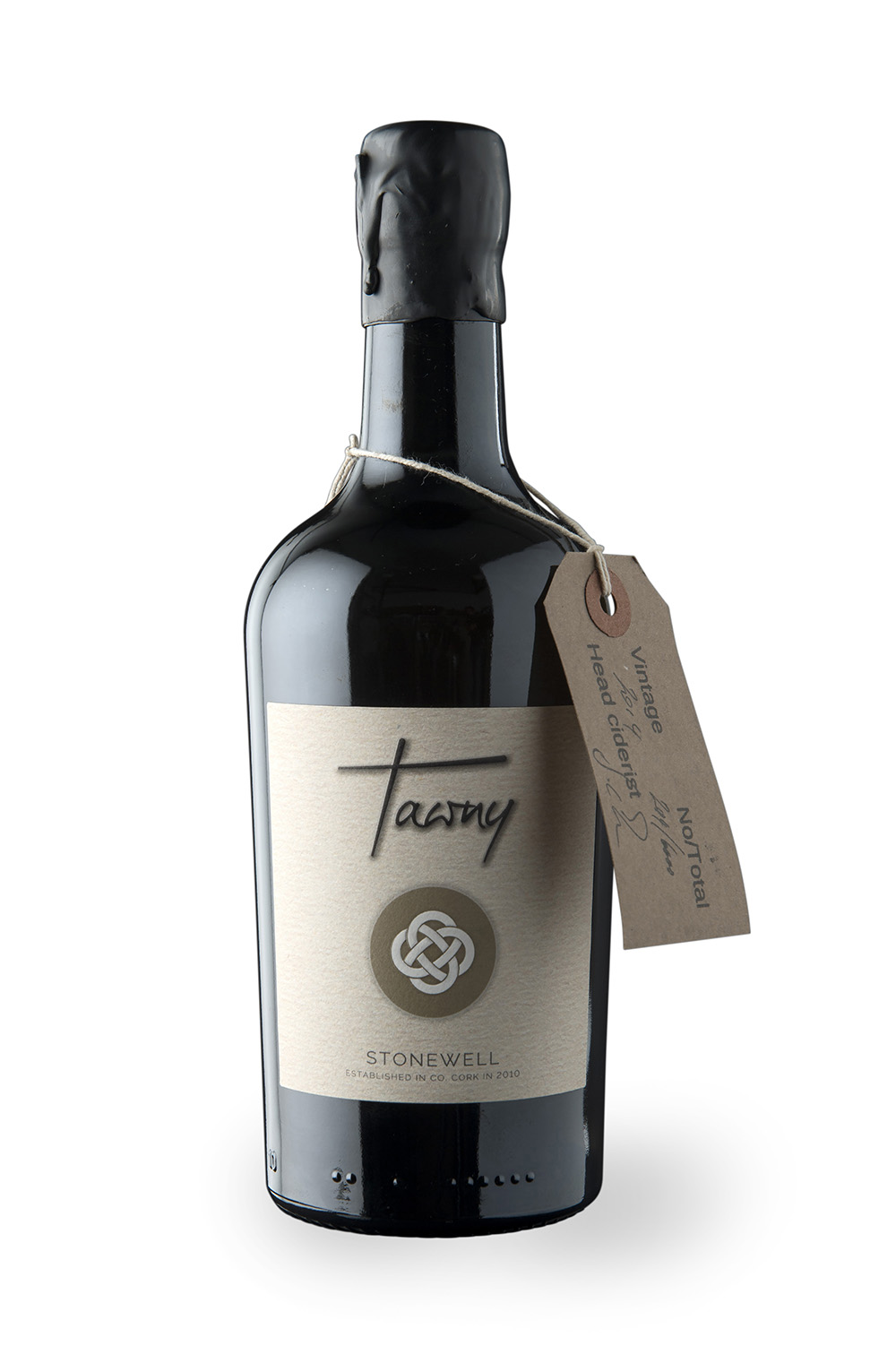 5. Stonewell Tawny, Co. Cork
5. Stonewell Tawny, Co. Cork
15%, €16.99, 500ml, see stonewellcider.com/news/tawny-stockists for selected independents
Daniel Emerson is one of Ireland’s most celebrated cider makers, having won all sorts of awards for his range (which includes a superb seasonal Rós apple and rhubarb cider). Here, techniques such as chaptalisation, dry-hopping and a long maturation produce this very unusual tawny: a high-alcohol, medium-dry, still cider with honeyed, raisined, baked apple aromas that is very much made for sipping. Serve lightly chilled as an aperitif or perhaps to accompany a creamy soft-rind cheese like Co Armagh’s Triple Rose.
 Aoife Carrigy is a freelance journalist, editor and author specialising in food, beverages and travel. She is drinks editor of Image Interiors & Living, a regular contributor to various publications including The Irish Independent, FOOD&WINE Ireland, Cara Magazine and The Guardian, and is completing a Masters by Research in TU Dublin examining the cultural evolution of the Irish pub. Aoife was co-author of Cornucopia: The Green Cookbook and The Ard Bia Cookbook and general editor of five cookbooks for the Irish Countrywomen's Association.
Aoife Carrigy is a freelance journalist, editor and author specialising in food, beverages and travel. She is drinks editor of Image Interiors & Living, a regular contributor to various publications including The Irish Independent, FOOD&WINE Ireland, Cara Magazine and The Guardian, and is completing a Masters by Research in TU Dublin examining the cultural evolution of the Irish pub. Aoife was co-author of Cornucopia: The Green Cookbook and The Ard Bia Cookbook and general editor of five cookbooks for the Irish Countrywomen's Association.






There are currently no comments
Leave a comment
Not a member? Register for your free membership now!
Or leave a comment by logging in with: